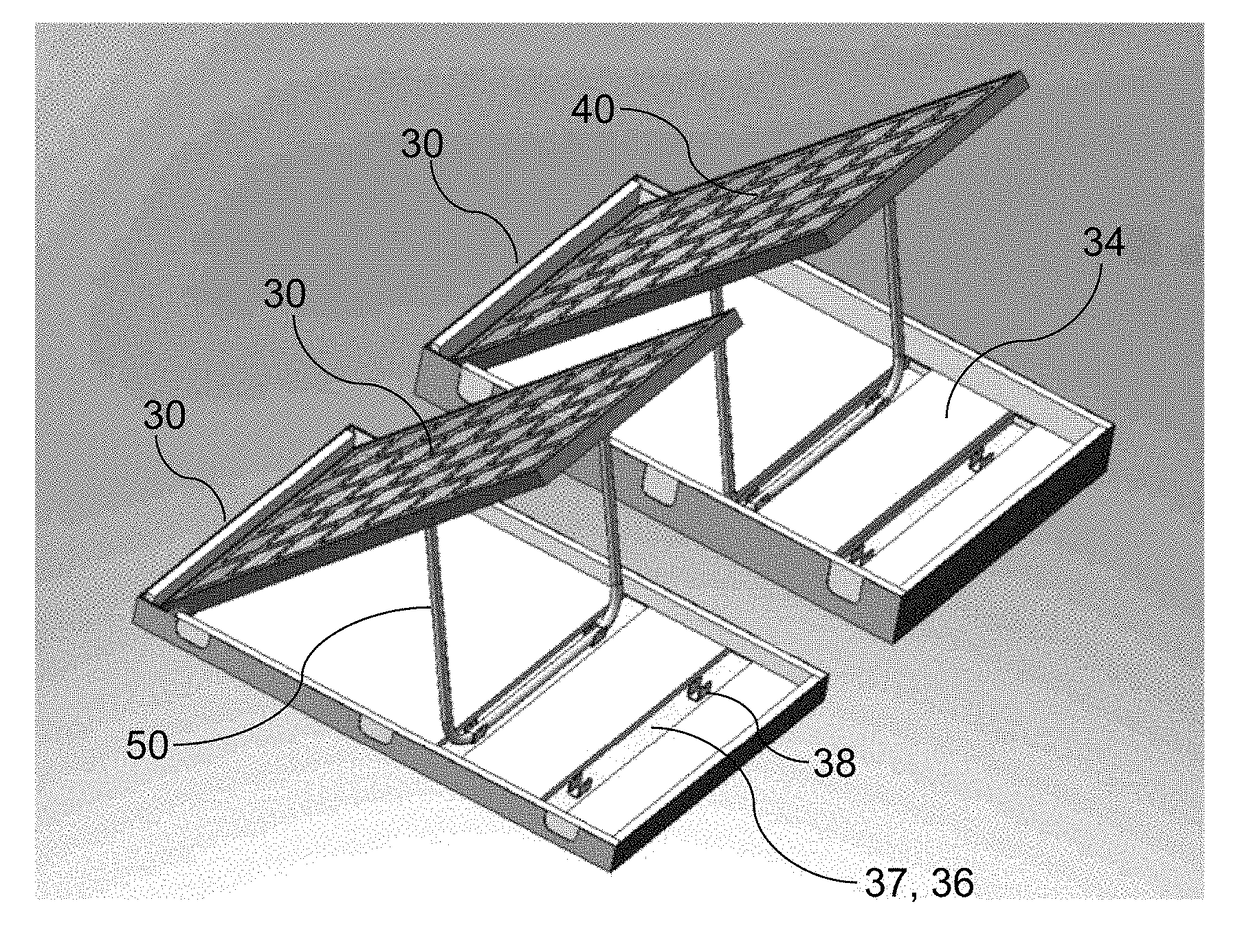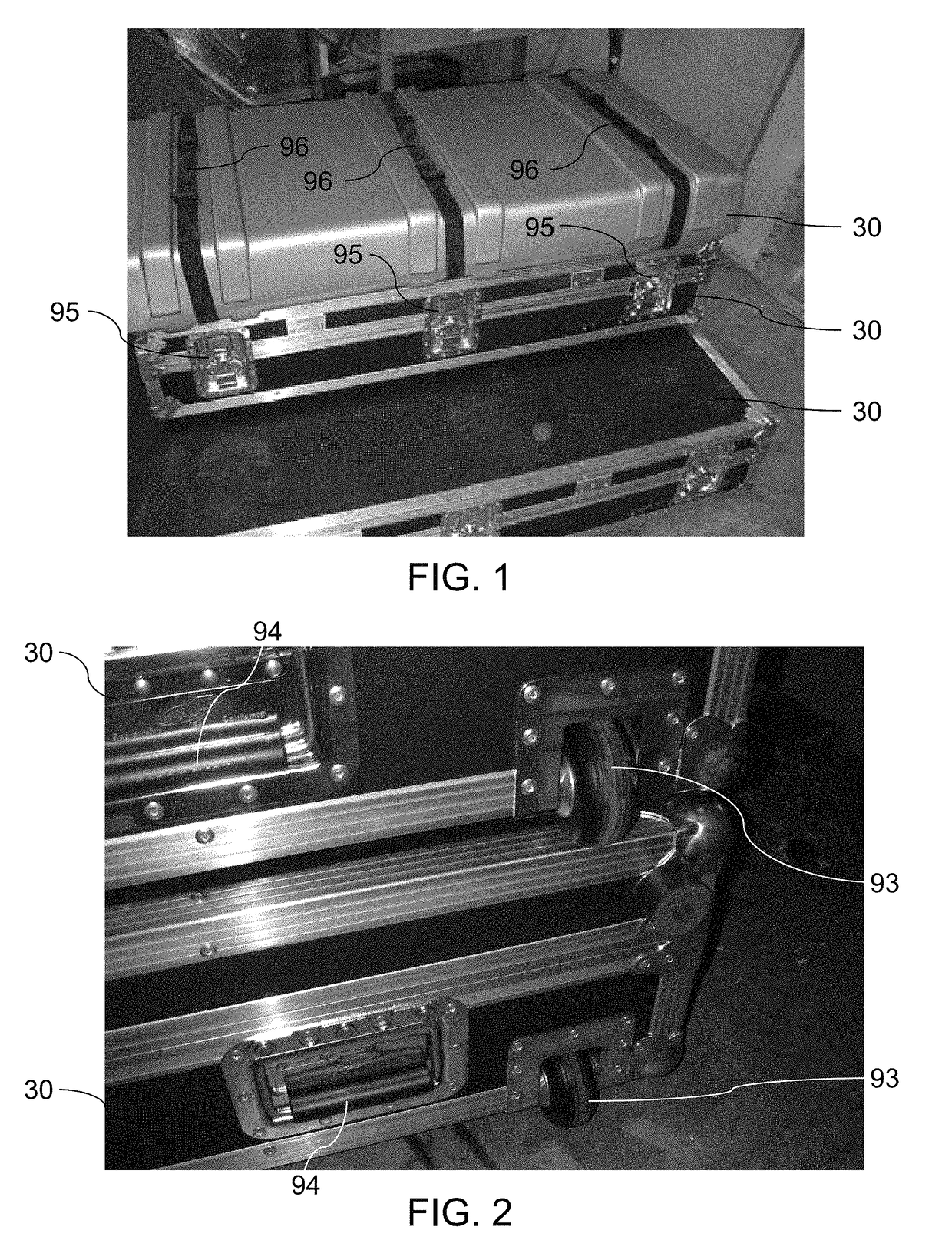Solar panel deployment system
a solar panel and deployment system technology, applied in the field of solar energy, can solve the problems of affecting the widespread use of solar panels in the field, the harsh military environment to which solar panels are exposed, and the impedement of solar panel deployment. the effect of safe transportation, fast and easy deployment, and rugged and durabl
- Summary
- Abstract
- Description
- Claims
- Application Information
AI Technical Summary
Benefits of technology
Problems solved by technology
Method used
Image
Examples
Embodiment Construction
[0019]Referring now to the figures, the present invention's solar collection device, as typically embodied, includes a case 30, two solar panels 40, and two U-shaped bars 50. As shown in FIGS. 8 and 9, the case 30 includes and is separable into a pair of complementary main parts 31, viz., 31a and 31b, referred to herein as “compartments” or “open case components” or “semi-case components” or “half-case components.” The open case components 31 are attachable to and detachable from each other and represent halves or semi-sections of the case 30. The terms “half” and “semi” as used herein to refer to the present invention's open case components are not intended to suggest that two joinable components necessarily are congruent or equally dimensioned, but rather to suggest that, according to typical inventive practice, they are major, comparable, and complementary components.
[0020]Particularly with reference to FIGS. 1 through 9, case 30 describes a rectangular parallelepiped and has len...
PUM
 Login to View More
Login to View More Abstract
Description
Claims
Application Information
 Login to View More
Login to View More - R&D
- Intellectual Property
- Life Sciences
- Materials
- Tech Scout
- Unparalleled Data Quality
- Higher Quality Content
- 60% Fewer Hallucinations
Browse by: Latest US Patents, China's latest patents, Technical Efficacy Thesaurus, Application Domain, Technology Topic, Popular Technical Reports.
© 2025 PatSnap. All rights reserved.Legal|Privacy policy|Modern Slavery Act Transparency Statement|Sitemap|About US| Contact US: help@patsnap.com



